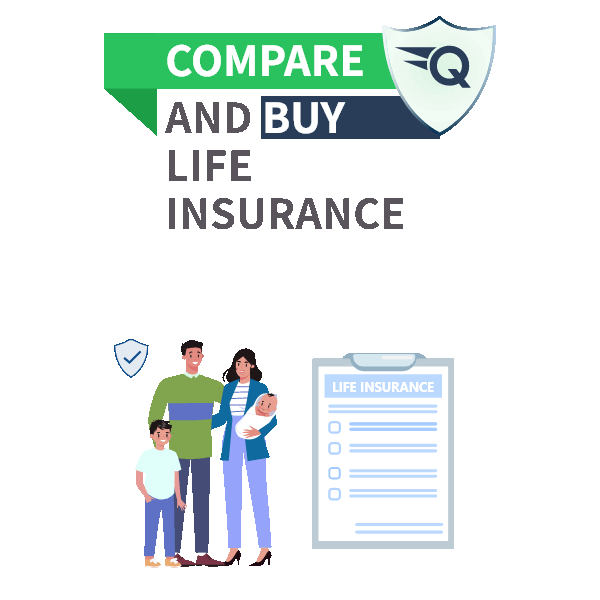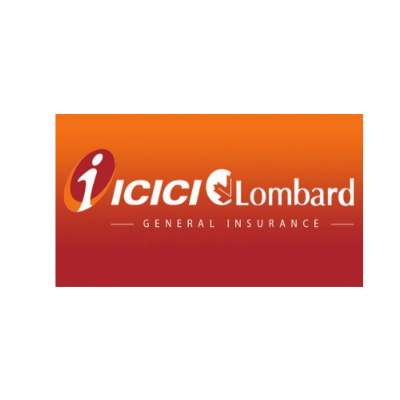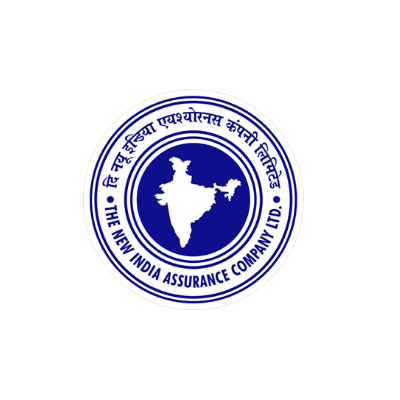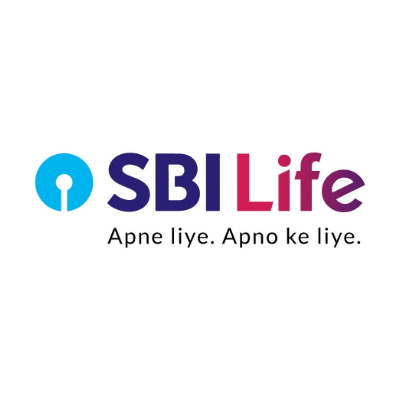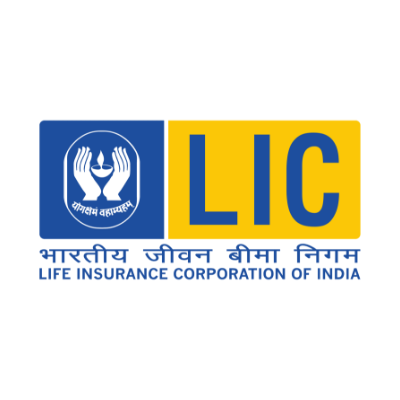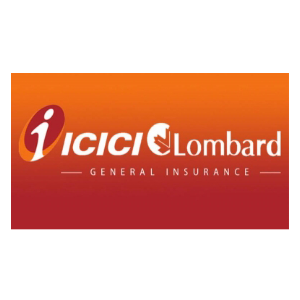WHOLE LIFE INSURANCE
Living an entire life carefree is a dream of many which seems impossible. But it can come true if you buy a Whole Life Insurance plan. Get risk coverage benefits of insurance for a lifetime and enjoy every moment. Let’s comprehend it in detail-

What is a Whole Life Insurance Plan?
Whole life insurance is a permanent life insurance policy. It’s a contract between the insurance company and the policyholder. The policyholder gets permanent protection as long as you pay the premiums consistently and gets risk coverage in the exchange.
As the name suggests, the policy plan delivers coverage to you for your whole life till it ends. Initially, the policy benefits policyholders till the age of 100. What if the policyholder lives a life more than the mentioned time period i.e. 100?
Let’s understand this with an example.
If Mr. Ram has opted to buy the whole insurance policy, then he must have to pay its premium for 100 years. After 100 years, if Mr. Ram passes away, then the policy's claim amount will be given to his nominee.
If Mr. Ram, a policyholder, survives after 100 years of age, he has the right to receive mature endowment coverage. Owing to this, the plan is called whole life insurance. You'll pay its premium as long as you're alive and receive life-risk coverage.
Benefits of Whole Life Insurance
Whole Life Insurance protects your family when your existence vanishes one day. Let’s understand why whole life insurance is a popular choice among people. Following are the whole life insurance benefits.
1. Lifetime/ Permanent Coverage
Paying premiums till your last breath can let you live tension-free. Whole life insurance gives durable life risk coverage for your entire life as long as premiums are paid. Long-term investment may prove fruitful to you.
2. Assurance for Death Benefit
Buying a whole life insurance policy is a trusted plan. The coverage amount of the policy gets handed over to your beneficiaries upon your demise. The policy assures the financial security of your loved ones too. So, now you won't have to worry about your family’s future.
3. Fix Premiums
The premium amount that you need to pay will be fixed throughout your lifespan. However, it may vary as per the terms and conditions of the insurer on its renewal. But till then you can manage the premium amount easily.
4. Tax Benefits
Under section 80C of the Income Tax Act, policyholders can claim a tax-free premium. Plus, in whole life insurance, policyholders get tax-free death benefits. It means, that after Ram's death, his nominees can receive the actual coverage amount without any tax deductions.
Types of Whole Life Insurance
Various types of whole life insurance plans are designed to serve different financial needs. Let’s comprehend the main types-
1. Non-Participating Whole Life Insurance
As per this type of insurance, you will get a fixed death amount for your whole life. Buy, the dividends are omitted. The complete scenario helps you to predict the amount and plan your life accordingly. Those who don't hope to get additional returns on the claim amount can choose to invest in this type.
2. Participating Whole Life Insurance
In this type, policyholders can receive the dividend but it does not assure you. It depends on the insurer's excess income. If the insurers perform well financially, then only you can get the dividend. If you can deal with the uncertain opportunity to obtain greater returns, then you can opt for this type of whole insurance plan.
3. Limited Payment Whole Life Insurance
Under this type of whole life insurance plan, policyholders are expected to pay the premiums for a certain time period. It means, that instead of paying a premium monthly for a lifetime, you can pay for 10 or 20 or 25 years. You need to pay higher premium costs in a shorter period.
When your early income range gets higher, then you can invest it in whole life insurance and enjoy the rest of your life. Once you pay the full premium amount, you will get the coverage benefit for a lifetime. For this, you aren't required to pay premiums monthly.
4. Single Premium Whole Life Insurance
Paying a one-time lump sum amount avoids the hassle of paying a monthly premium. Once you pay the full premium amount, you won't have to pay further. It provides immediate cash value growth along with the death benefit. The policy type can give you a full proof investment future plan till the end of your life.
The policyholder takes this risk if he meets with an unexpected financial gain. Instead of investing this money somewhere else, they can secure their upcoming life permanently.
Difference Between Term and Whole Life Insurance
Following the comparison between term and whole life insurance assists you to make your decision.
|
Term Life Insurance |
Whole Life Insurance |
|
Delivers benefits for fixed terms such as 10, 20, or 30 years. |
Provides lifetime benefit. |
|
Premium rates are lower and confirmed for the term. |
Premium rates are higher but fixed for life. |
|
It does build cash over the initial payment. |
Builds a cash value over time. |
|
Receive death benefit only if the policyholder passed away during the term. |
Provides confirmed payout whenever the policyholder dies. |
|
It is financially more affordable due to its lower premium cost. |
It is expensive as it is a lifelong provision and coverage with cash value. |
|
Policy expires after a specific time period. |
Policy does not expire till the policyholder is alive. |
|
One can renew the policy after a certain period. |
Provides stable benefits as it lasts longer. |
|
It does not comprise any investment or saving way. |
It’s an ultimate saving option. You can borrow a loan or withdraw cash value whenever required. |
|
It is ideal for receiving temporary coverage needs. |
It's a long term plan to secure your family’s life after you. |
|
It does not allow you to invest for legacy purposes. |
It is best to plan your estate and build a legacy for the next generation. |
How Does Whole Life Insurance Work?
The whole Life Insurance is not just a way to secure life financially, but the saving amount for emergencies. Let’s acknowledge how it functions.
The whole life insurance remains in effect till your final moments on the planet. Till then you continue to pay the premiums. There is a specific provision when you can pay the wholesome premium amount at once.
Moreover, the premium amount that you pay won't change throughout your life. So, you won't get any surprises after buying the product.
In addition to this, a component of your premium will be accumulated as a cash value. It would grow over time. You can borrow it for any emergency situation or withdraw anytime. In short, the cash value is a saving for you.
Besides, beneficiaries obtain a tax free death benefit when the insured passes away. Assuring the confirmed death benefits makes you feel financially safe.
At last, policyholders can get potential dividends if the company gains massive income. So, it's an additional advantage.
Let’s Comprehend Whole Life Insurance Working Through Example
Ravi at the age of 30 purchases a Whole Life Insurance policy at Rs. 50 lakhs sum assured. He pays the premium of Rs. 50,000 per year for 20 years.
At the age of 50 Ravi had paid a total of Rs. 10 lakhs in premiums. In this, the cash value has grown to near about Rs. 6 to 8 lakhs. Now he interrupted the premiums, still the coverage continues for life.
At the age of 65: The cash value gets increased. Ravi can use it as a loan against the policy if needed.
At the age of 80: Ravi’s family would receive Rs. 50 lakh death benefit plus bonuses which could make Rs. 70 lakhs.
Eligibility Criteria for Whole Life Insurance
Eligibility for Whole Life Insurance depends on the policy type and insurance provider. Here are some common criteria are listed below
1. Age:
Individuals who opt to buy whole life insurance should be 18 to 80 years old. Some may purchase child whole life insurance for minors too.
2. Health:
Individuals need to undergo medical examinations. They shouldn't have any history of chronic disease, surgeries, or high-risk conditions.
3. Financial Stability:
Whole Life insurance is an expensive plan. Individuals can afford its premium and pay it regularly for the long term. Financial stability is a main and essential factor.
Consult your insurance advisor before making any decision to elaborate this more efficiently.
What Riders Can be Added with Whole Life Insurance Plans?
The whole life insurance plan can be customized by adding the following riders.
Accidental Death Benefit Rider: It covers accidental death or any injury.
Critical Illness Rider: It covers particular illnesses or surgeries.
Family Income Benefit Rider: Adding this rider provides a fixed amount for your family after your demise.
Waiver of Premium Rider: Delivers benefits to your family if you are disabled or dead.
Hospicare Benefit Rider: Additional benefits on hospitalization.
Accidental Total and Permanent Disability Benefit Rider: Delivers benefit if the policyholder is facing accidental injury or permanent disability.
Whole Life Insurance- FAQs
Who Should Buy Whole Life Insurance?
Whole life insurance is best for people who want to leave a legacy for their children, people seeking a way to live a peaceful life after retirement, or people who are suffering from severe diseases.
Is Whole Life Insurance Premiums Taxable?
Yes, it is taxable. Exceeding the annual premium amount of Rs. 5 lakhs liable to pay the tax. The rule is introduced for the policies issued after April 1, 2025.
Does Whole Life Insurance Provide Guaranteed Death Benefit?
Yes, as long as you pay the premiums, you will surely get its benefits. After you, your children will receive the benefit even if they turn into adults.
What if I Surrender my Whole Life Insurance?
Surrendering the Whole Life Insurance may result in tax complications. It will impact your tax activity. You are required to pay the tax on the surrender amount.
Can I withdraw money from my whole life insurance policy?
Yes, a cash value that you can borrow or withdraw in emergency situations. It's a saving part of your insurance amount. It grows tax free.
What is the minimum and maximum entry age for whole life insurance?
Generally, people from the range of 18 to 75 can buy whole life insurance. However, some providers allow individuals to buy the policy with a zero age limit.
Disclaimer: The information provided in this blog post on Whole Life Insurance is for general informational purposes only. Insurance policies and terms may vary based on providers and individual circumstances. Readers are advised to consult with a licensed insurance professional or financial advisor for personalized guidance. Quickinsure will not be responsible for any actions taken based on this information.
